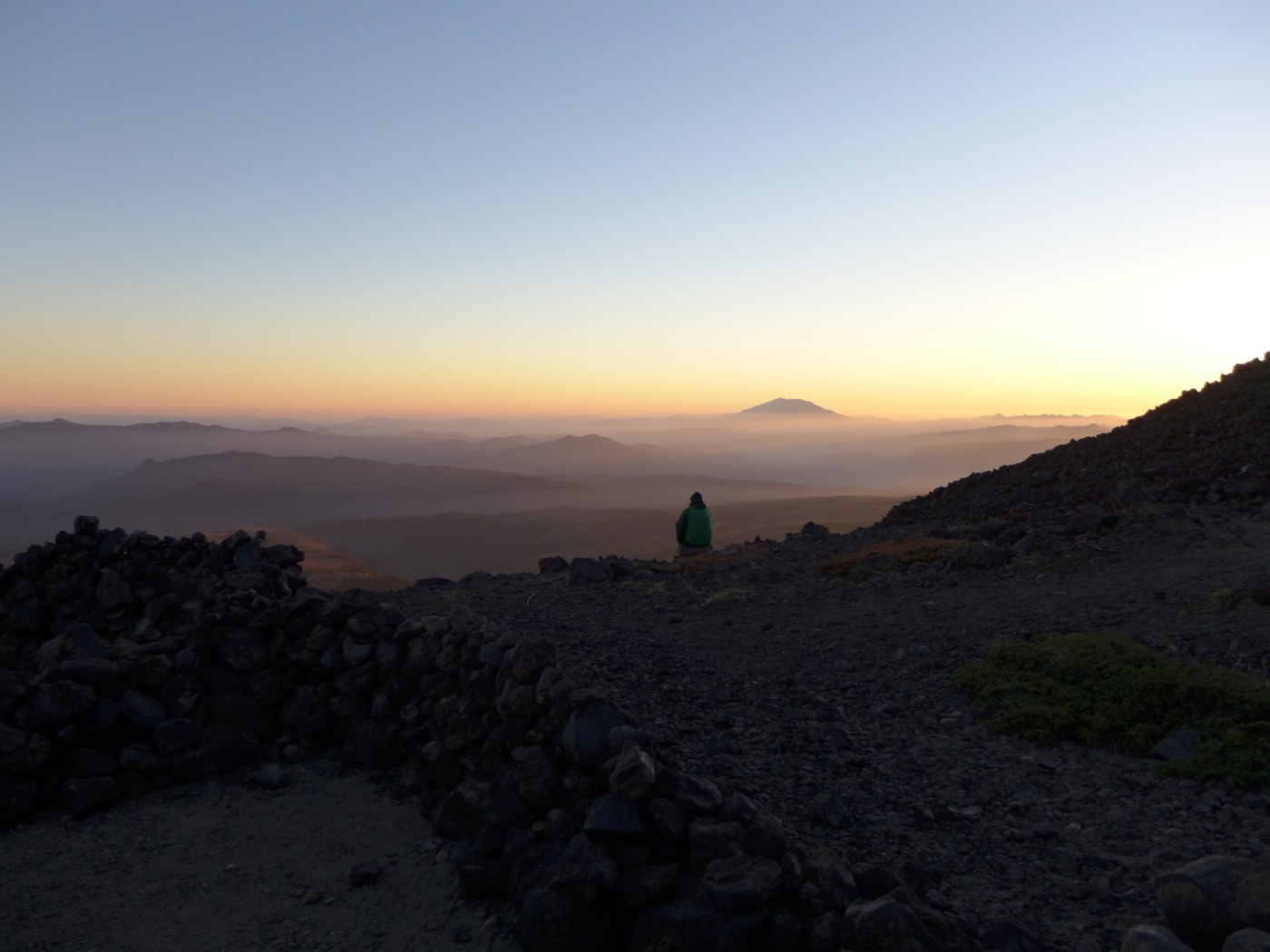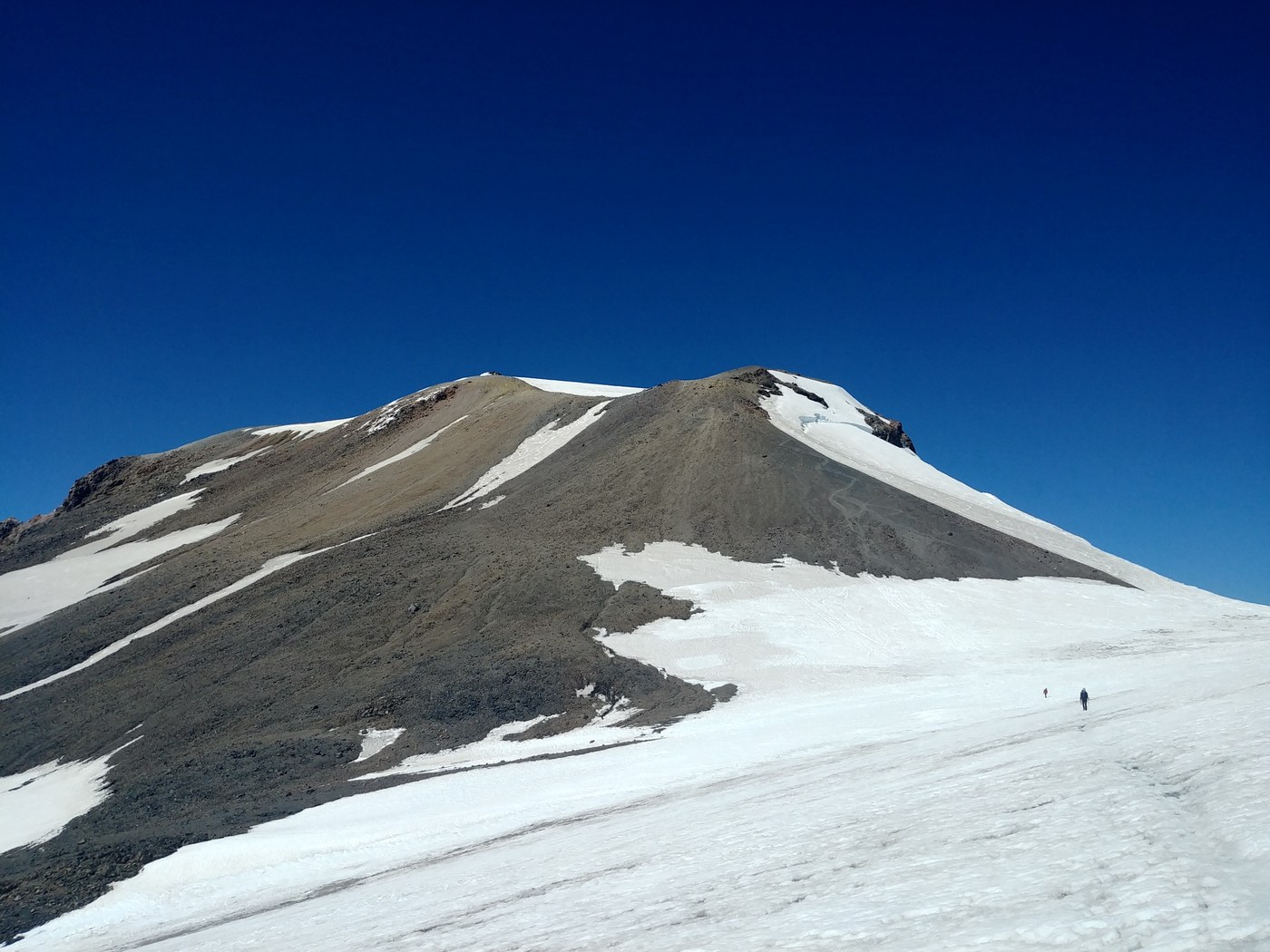Hiked up Mt. Adams on Saturday and wanted to share some thoughts and beta:
We ended up do things the opposite of the recommended method; our party of four started at 0430 from the trailhead on Saturday intending to drop camp around 8000' then push to the summit the same day to minimize our time on the mountain and get home a bit sooner after a nearly six hour drive home. At our campsite three of the party tried to nap in our tents while I melted snow for water (running water isn't available near the ridge with camp sites until around 8500', I highly recommend pushing up to that point). At 1000 we started up the mountain again with lighter packs. Around 8750' or so one of our party had to call it quits, the combination of altitude and heat was getting to her and she did not feel safe continuing. At this point our party split in two with one group headed up and the others headed back to camp.
We tried to stick to the snow covered areas to reduce the trip hazards and make the going a bit easier, and even strapped on our crampons to reduce the sliding in the rapidly softening mid-day snow. At a break in the snow just below Piker's Peak we found ourselves looking for other options. The trail here is the steepest on the whole route, and neither the rock nor the snow looked inviting. Instead we scouted around the West side of Piker's Peak and traversed a loose scree slope before heading back to rejoin the normal trail. This is a terrible idea, I cannot recommend it.
The field between Piker's Peak and the summit has started to melt out alarmingly, with rivers and standing water covered by snow. There were several areas where it appeared people had punched through with a foot, but no large holes thankfully.
After one last push up a loose scree slope we made it to the shack and traversed over to the summit. The views were spectacular if a bit hazy, but you could see from Mt. Jefferson in the South to Rainier in the North, and everything in between. We were the last people on the summit that day, which we were glad for because it was around 1500 and even an attempt as late as ours was foolish.
Coming back down the scree slope from the summit you can better see the river-like wet stop in the middle of the saddle. It was slow going at this point as the sun had softened the snow even more than on the way up. I slowly meandered forward prodding the snow with my poles looking for an area where it didn't poke through to water (and this is with small baskets on too) while my partner followed a short distance behind in my footsteps.
Starting at Piker's Peak we attempted any glissade we could find to save time and energy going down. The sun and heat had softened the chutes to the point where it was tough to get going and I found boot skiing to be more effective in many areas. Between the various sliding techniques we employed we managed to save a couple thousand feet of hiking down and were feeling relieved as we started to approach camp.
The evidence of high heat throughout the day was plentiful as we got lower, with a few areas of the glacier forming cracks and gaps. None looked deep but seeing how much they had grown during a single day it was enough for us to take note. When we got back to camp our other party members were still there waiting for us, and attested that it had been in the upper 80s all day.
We made food and had little energy left to do much else, and went to bed as soon as the sun was low enough not to cook us in our tents. Overnight the wind picked up around 0100 and did not relent, leading to a rather sleepless night even with the protection of a rock wind barrier. A benefit of this though is I was awake to see the stars, which were the most beautiful display I've seen while out camping.
As early as we could muster on the second day we packed up and headed out. By time time we were on the trail at 0800 it was already hot and we were rather shaky heading down the trail. The trail is more of a spider web of faint paths, so be mindful of where you're headed. We missed a turn and ended up off trail, having to navigate back over unfamiliar terrain. Follow the cairns and you should be alright.
Some final thoughts:
* I can't recommend trying this mountain in one day if you haven't done it once before
* If you do want to do it in a day, start earlier than we did or climb during cooler weather
* A two day climb is an excellent way to go, and even though it may suck to carry your gear up further, setting up camp between 8500' and 9000' will feel much better on the second day
* While it could be done without, I recommend crampons for the way up. If you plan on descending on snow (also recommended) an ice axe is a must.
* It may only be about 1000' more climbing, but this mountain felt much harder than Helens, possibly due to the low snow load.
* I ran through 3L of water from camp at 8000' to the top and back and was still very dehydrated. Bring some kind of electrolyte replenishment as well.





Comments